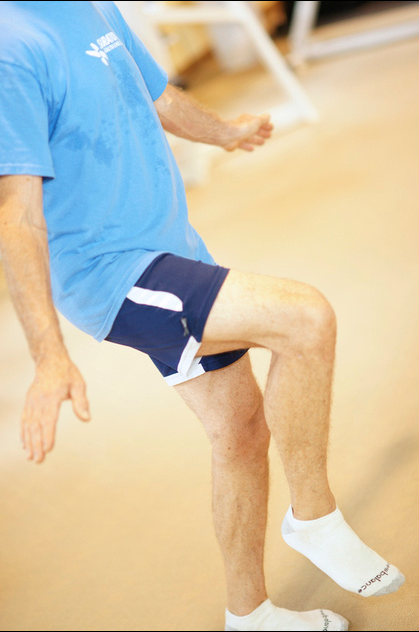
How?s your balance? It may not be as good as you think. Balance diminishes with age and poor balance can set the stage for a nasty fall ? a major cause of injury and disability. The eyes and ears are an integral part of the vestibular (balance) system. The eyes are two of the most important sources of information for our brains. Information on subtle changes in terrain and upcoming obstacles gives our brains the chance to make appropriate adjustments in our body?s posture. Knowing which way is up and which way is down are things our eyes supply to our brains every second they are open.
In addition to the eyes, the ears are also important part to the vestibular system. The inner ear has fluid deep inside that acts like a level used in construction. When our head moves from side to side, so does the fluid. The shift in fluid stimulates tiny hairs found in the ear, which in turn tell our brains information on position and orientation of our head with respect to the ground.
So how do we measure good vs. bad balance. One simple test that we use is the single leg balance test, which can be performed at home using a little caution. Try standing tall with your arms by your sides, but not touching their sides, and elevate one leg until the thigh is parallel with the ground. Once stable, close your eyes and see how long you can maintain balance. Any re-positioning of the foot is considered a loss of balance. Repeat on the other side.
You should be able to balance for 24 to 28 seconds if you are between 20 and 49 years of age. If you?re between 50 and 59, 21 seconds is average ? 10 seconds if you?re between 60 and 69. And if you?re between 70 and 79, 4 seconds is average. Here are few exercise which will improve your proprioception and help balance:
Heel-To-Toe Walk:
Stand up straight and hold your arms out to the side. Now, place one foot directly in front of the other, with the heel of your front foot touching the toes of your back foot. Practice walking forward and backward in an imaginary straight line.
One-Leg Stand:
Balance on one leg while doing everyday tasks, such as brushing your teeth, watching TV, or standing in line.
Caution! If you aren?t so steady on your feet, hold on to a table, chair, or counter for extra support, and make sure someone is on hand to catch you if you start to lose your balance.
Source: http://www.saratogahealthandwellness.com/news/balance-basics/
the weeknd payroll tax payroll tax aisha khan alanis morissette adam lambert incendiary
No comments:
Post a Comment